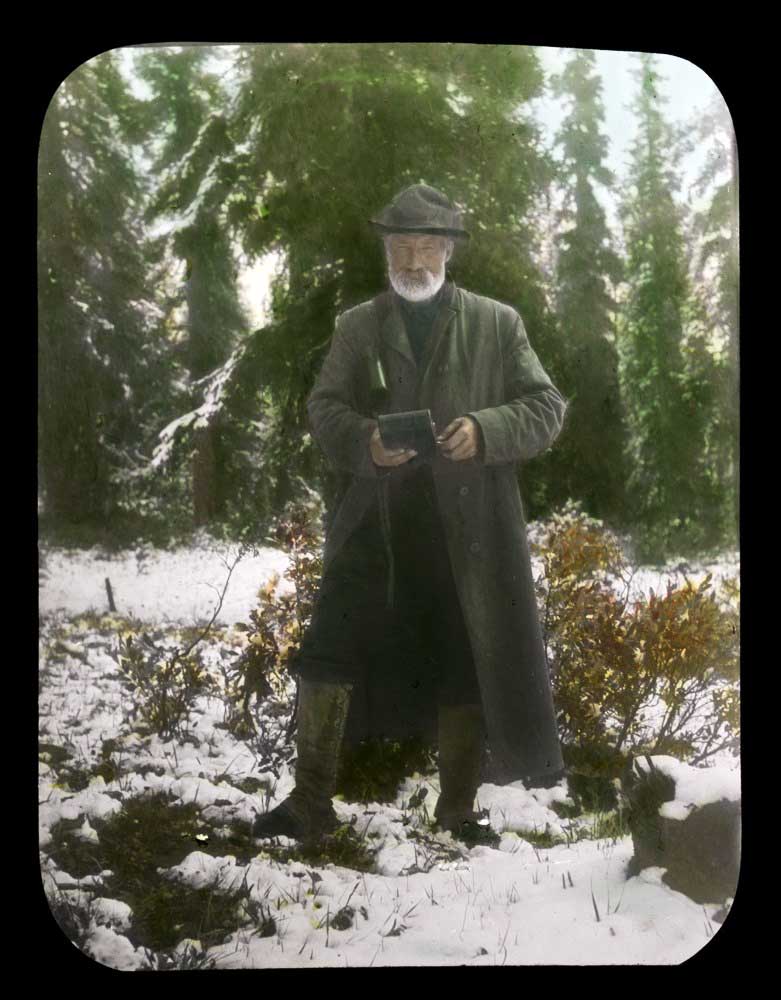Province: British Columbia
Location: Forks off Hwy 16
Named in association with “The Colonel” (mountain).
Named in association with “The Colonel” (mountain). Adopted in 1923 as labelled on Wheeler’s map of Mount Robson (1912).

Dr. A. P. Coleman. Lantern slide by Mary T. S. Schäffer Warren, 1907. Whyte Museum of the Canadian Rockies, Moore family fonds
The first mention of the name is in the report of Arthur Oliver Wheeler [1860–1945] on the Alpine Club Of Canada’s 1911 expedition to Jasper Park, Yellowhead Pass and the Mount Robson region:
The Yates trail comes out in an open at the highest point. It might well be called “Exclamation Point.” Looking south in the V of the valley, Mt. Resplendent stands a great white cone, clad from head to foot in eternal snows. Below, to the left, Yates Torrent issues from the forefoot of Coleman Glacier, a splendid icefall, the main northern outflow of Reef Névé.
The earliest known description of Mount Robson is found in the journal of John M. Sellar. Sellar was an “Overlander,” members of parties of gold-seekers bound for the Cariboo. Sellar’s party passed the peak on August 26, 1862. “At 4 pm we passed Snow or Cloud Cap Mountain which is the highest and finest on the whole Leather Pass. it is 9000 feet above the level of the valley at its base, and the guide told us that out of 29 times that he had passed it he had only seen the top once before.”
Eleven months after the passage of John Sellar, on July 14, 1863, Viscount Milton and Dr. W.B. Cheadle passed the mountain in the course of their overland journey of adventure to the Pacific Coast. Their book contains the earliest known description of Mount Robson by name.
See Clemina.
In September 1913, newlyweds Clemina Pearl (Cox) (born ca. 1890) and Charles Wilfrid Buckle came to Thompson Crossing, where Charles was construction engineer for the Canadian Northern Railway. From her home in Vancouver in 1983, Clemina Buckle wrote, “There had been eleven brides in there and each one had something named after her. My husband drew the maps. He named two places after me. I have never been back but look upon those two years as the happiest of my life.”
Clemina (Station) adopted by the BC Geographical Names Office in 1961 as labelled on BC map 3J, 1917, and on 1950 edition of 83/SW. Rescinded 15 December 1989.